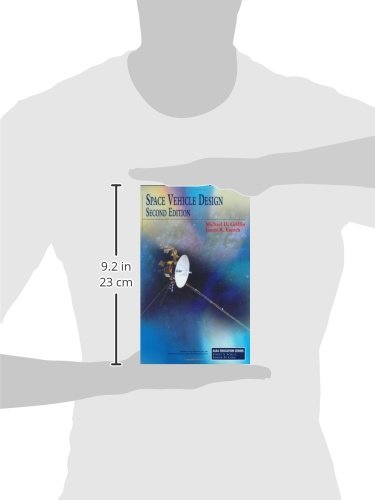


Space Vehicle Design, Second Edition (AIAA Education)
D**K
The book on this topic to own.
Fantastic book.
Z**G
A good text but very general
I used this book in a space vehicle design class. If you intend to use this text to gain a broad understanding of the basic design considerations for space vehicles, I believe you will be satisfied. If, however, you would like to go into depth regarding rocket propulsion, orbital mechanics, structural/vibration analysis, reentry, etc. look for a text which is devoted to those topics. This text does cover such topics as well as others but is lacking in detail. There are some good examples throughout each chapter and problems at the end of each chapter.
R**E
Awesome book by an awesome man!
Mike is an AWESOME mentor. The book explains things very well and I recommend above the others. I used it while working on a 6DOF for a fuel consumption study. I have also used the book on some video game work.
B**P
Its informative but dry
I had to buy this book for one of my college courses. It is very informative and I learned much from this book, but reading it is incredibly boring. It is such a dry read.
B**O
Good introduction
This is a good introduction to spacecraft design. The author, Michael D. Griffin is a former NASA administrator. The layout and content of this text are similar to other spacecraft design books such Spacecraft Systems Engineering by Peter Fortescue, Graham Swinerd and John Stark. Since all space design books look about the same, it is just a matter of personal preference to choose the favorite one. This book cover all of the classical topic of space vehicle design: space environment, orbital mechanics, spacecraft dynamics, propulsion, structure, attitude control, telecommunication, thermal control, electrical systems. However, don't expect to became a specialist in each of these topics with this single book, you must refer to specialized text. For propulsion, look at Rocket Propulsion Element. Nevertheless, you will find interesting and useful information from a design perspective. For example, you will learn that the F-1 engine's gas generator is started by the head pressure of the tank.
A**I
Covers Good, Wide Range of Material
Griffin, former NASA administrator, truly is an engineer's engineer, as you can see in this textbook. Covers material spanning astrodynamics, rocketry fundamentals, mission architecture, etc. If you have a passion about space, this is required reading to learn the intricacies of aerospace.
Trustpilot
3 weeks ago
1 month ago